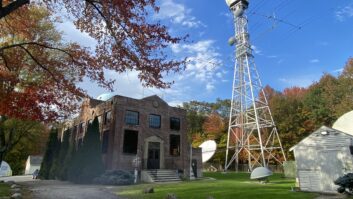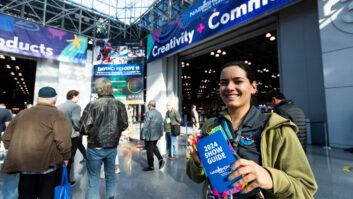Beginning with this issue, I’m wearing a different hat in these pages. I’ve been writing regularly for RWEE for some 12 years now (and since the 1980s for Radio World), but now I’m moving into the RWEE technical editor’s slot, following in the footsteps of Michael LeClair and Rich Rarey.

The author with K236CQ, one of the 11 translators he built out in 2016. This one is licensed to Commerce City near Denver, Colo., and paired with 50 kW KLTT(AM). The supporting structure is Tower No. 4 of the KLTT directional array.
Photo by Amanda Hopp
For those of you who don’t know me, here’s a little background. I started my broadcast career at radio and television stations in Amarillo, Texas, in the 1970s. I moved to the Dallas/Ft. Worth area in 1979, working for several different radio and TV stations there before settling back into radio exclusively in 1984. It was then that I landed my current job as director of engineering for Crawford Broadcasting Co.
Crawford had six stations in six markets in those days. In the 32 years since, it has grown to 34 signals in 10 markets (if I counted right). That’s been quite a ride, one in which I have been given the freedom — the mandate, even — to keep the company on the cutting edge of technology (we’ve been right on the “bleeding edge” in some areas). That has afforded me a great opportunity to not only stay up with emerging technologies and techniques but also to participate in their development. As I said, quite a ride, and the adventure continues!
Taking the reins as RWEE’s technical editor seems, in a lot of ways, like a natural progression — and it is, but it’s going to take some getting used to on my part and yours. I’m grateful for the opportunity and look forward to bringing you in-depth technical content that you can use.
We kick that off this month with a white paper by Junius Kim and Keyur Parikh of GatesAir that deals with the transport of FM composite signals across an IP network. With more and more transmitters capable of accepting AES192 inputs and stations building out broadband IP infrastructure between their studios and transmitter sites, engineers will more and more have the opportunity to get into the digital domain and stay there right to the exciter.
Along that same line, Alan Jurison deals with HD time alignment issues, a critical and often overlooked element in the positive listener experience. Stations that jump time back and forth in the blend areas can find themselves losing listeners to this tune-out factor if they don’t keep their time alignment very close.
A key element of maintaining good HD time alignment is the ability to monitor signals accurately off air, something that is becoming increasingly challenging in today’s RF-polluted environment. Mike Pappas of Orban recently designed and constructed an FM/AM master antenna system for the Orban plant in New Jersey; he shares both his journey in getting to the final working configuration as well as the techniques and hardware he employed in getting there.
Finally, John Kean continues his fascinating series on microphones, this month dealing with the circuitry used with electret microphones to convert their outputs into a form we can use. I love the way he employed circuit simulation in his analysis, and I hope his approach will inspire readers to make use of some of the open-source circuit simulation packages that are readily available.
We love to hear from our readers. What did you like? What didn’t you like? What content would you like to see in future editions? Drop me an email at [email protected]. As I settle into my new role with RWEE, I’ll be looking for reader ideas and input. This is your big chance to contribute.
You can also read Cris Alexander’s “Day in the Life” articles here.







